La Trappe Quadrupel — A Practical Guide to Belgian Quads
Quadrupel (often written "quad" or referred to as "Belgian quad") describes a family of strong, dark, malt-forward Belgian ales. If you love rich caramel, dark fruit notes like dates and raisins, and a warming alcohol presence balanced by a lively yeast character, this style is for you. Below you'll find answers to common questions about the style, basic brewing guidance, classification notes, food pairings, and how La Trappe fits into the picture.
What is a Belgian Quad?
A Belgian Quad is a strong Belgian ale that emphasizes deep malt flavors, dark fruit esters, caramel and toffee, and sometimes subtle roasted notes. Compared with lighter Belgian styles, quads are fuller-bodied and sweeter on the palate, though a clean fermentation and moderate bitterness keep them balanced. Many quads are produced by monastic breweries or in that tradition, which contributes to rich, layered flavor profiles.
Belgian Quad vs Tripel — What's the difference?
Although both are strong Belgian ales, there are clear differences:
- Color and malt character: Tripels are typically pale to golden with hop and fruity yeast character; quads are darker, richer and more malt-focused.
- Strength: Tripels are strong but usually lighter in body; quads push toward higher alcohol and a fuller mouthfeel.
- Flavors: Tripels show peppery spice and estery fruit from yeast plus a dry finish; quads emphasize caramel, dark fruit (dates, figs, raisins), and toffee.
- Use: Tripels work well as sessionable strong beers for drinking relatively fresh; quads are often sipped, aged, and paired with heavier foods or desserts.
How does BJCP classify Belgian Quads?
In formal beer-style guidelines (for example BJCP), many beers commonly called "Quadrupel" are categorized under the broader "Belgian Dark Strong Ale" style. That label recognizes the dark color, high gravity, and complex malt/yeast interplay. Judges look for balanced sweetness, rounded alcohol presence, and authentic Belgian yeast character: rich fruit esters, subtle spicy phenols, and a smooth finish.
Belgian Quad — A simple homebrew recipe outline
If you want to brew a quad-style beer at home, here are the basic building blocks and process steps to get started. This is a guideline — adjust grain bill and yeast choices to your taste and equipment.
Typical target metrics
- Original Gravity (OG): roughly 1.090–1.110
- Estimated final ABV: around 8–12%
- Color: amber to dark brown
- Bittering: low to moderate (just enough to balance)
Sample ingredient list (5 gallon / 20 L batch)
- Pilsner or pale malt base (60–70%)
- Munich / Vienna malt (10–20%)
- Specialty malts for color and caramel (Crystal 40–120, small amounts of Special B)
- Dark candi sugar or Belgian candi syrup (optional, helps raise ABV while keeping body moderate)
- Low to moderate bittering hops (Saaz, Styrian Goldings or similar)
- Belgian strong ale yeast strain (Trappist/Belgian ale yeasts that produce dark fruit esters)
Basic process
- Mash for a slightly higher conversion temperature (66–68°C / 151–154°F) if you want more body, or lower for a drier finish.
- Boil 90–120 minutes to drive off water and concentrate wort if targeting high gravity.
- Add candi sugar late in the boil if desired to boost fermentable sugars.
- Ferment warm enough for the chosen Belgian yeast to express esters (often 18–22°C / 64–72°F, depending on strain).
- Allow extended conditioning/aging (several weeks to months) to round out flavors and mellow alcohol.
Food pairing ideas for Belgian Quads
Quads pair wonderfully with bold, rich flavors. Try these matches:
- Roasted or braised meats (beef, lamb, game)
- Hearty stews with caramelized onions
- Blue cheeses and aged cow’s milk cheeses
- Chocolate desserts, crème brûlée, caramel tarts
- Dishes with dried fruits or a sweet-spiced glaze
For an immediate pairing suggestion, consider enjoying with a caramelized pear tart or a slice of aged Gouda.
What is "Abt" beer (Abt 12) and how does it relate?
"Abt" (as in Abt 12) is a name used by La Trappe for one of their strong, dark Trappist ales. Abt 12 is often listed among the brewery’s strongest offerings and exemplifies the quad-like character: rich malt, dark fruit, and a warming alcohol presence. Because different breweries use names like "Quadrupel" commercially (and because many strong Belgian dark ales share similar profiles), it’s common for consumers to encounter both terms — "quad" as a style nickname and specific commercial names like Abt 12 as individual beers.
Tasting and serving tips
- Glassware: use a tulip or goblet to concentrate aromas and show color.
- Serving temp: slightly cool, around 10–13°C (50–55°F), to keep aromas lively while letting flavors open.
- Pour gently or decant to leave some yeast behind if the beer is bottle-conditioned and you prefer a clearer pour.
- Give it time: many quads improve with short-term cellaring (months) as flavors meld.
Conclusion
Belgian quads are a rewarding style for people who enjoy complex, malt-forward beers with fruit, caramel, and warm alcohol notes. Whether you're brewing your own, pairing a meal, or exploring Trappist bottles, understanding the building blocks of the style helps you appreciate why beers like those from La Trappe have earned devoted fans. Sip slowly, pair boldly, and enjoy the layers.





